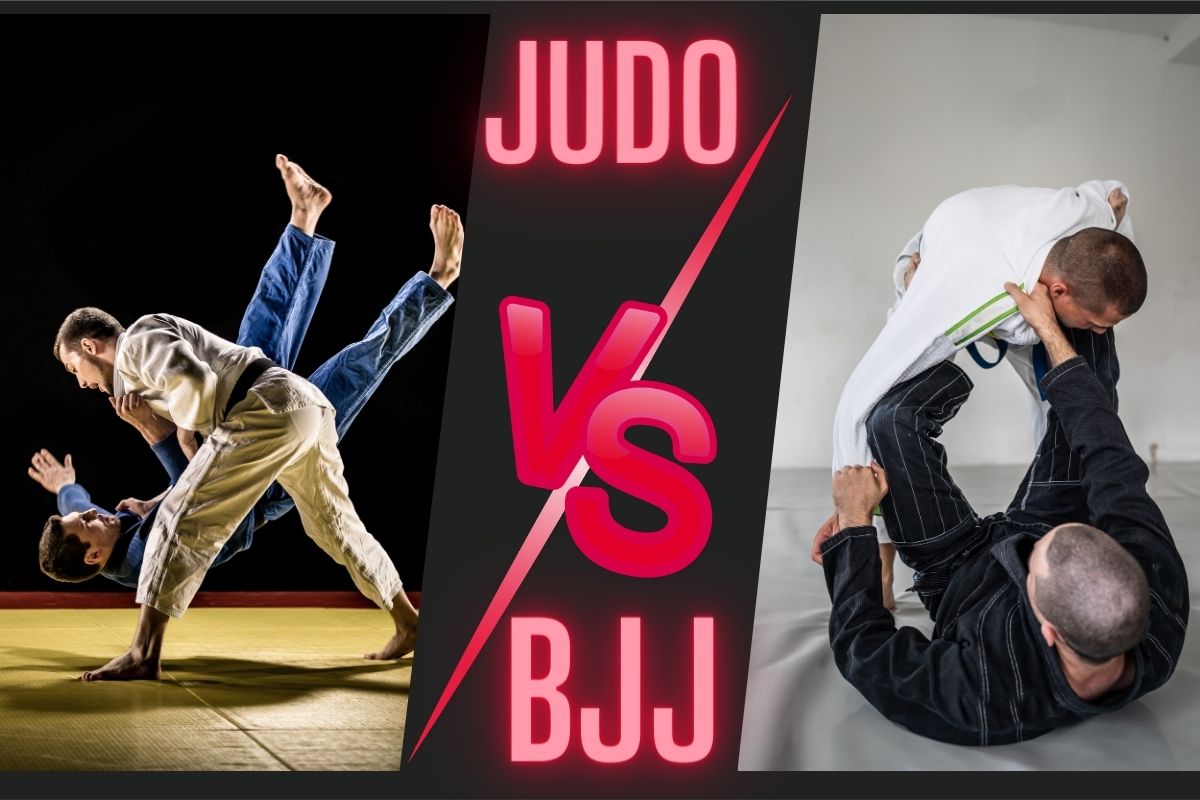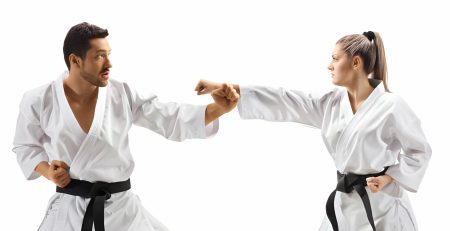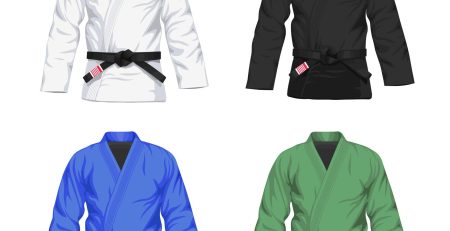Judo Gi vs BJJ Gi – Which Martial Arts Suit Reigns Supreme?
Table of Contents
- Introduction
- Understanding Judo Gi
- Understanding BJJ Gi
- Differences Between Judo Gi and BJJ Gi
- Similarities Between Judo Gi and BJJ Gi
- Choosing the Right Gi for You
- Conclusion
Introduction
When it comes to martial arts, the right gear can make all the difference. Among the essential equipment for practitioners of Judo and Brazilian Jiu Jitsu (BJJ) are the traditional uniforms known as Gis. However, there’s often confusion regarding the differences between a Judo Gi and a BJJ Gi. In this comprehensive guide, we’ll delve into the intricacies of these two types of Gis, exploring their unique characteristics, differences, similarities, and considerations for choosing the right one for your practice.
Understanding Judo Gi
The Judo Gi, also known as Judogi, is the traditional uniform worn by practitioners of Judo. Designed to withstand the rigorous demands of Judo training and competition, the Judo Gi is characterized by its heavyweight construction and loose fit. Typically made from thick cotton or a cotton/polyester blend, the Judo Gi is built to endure intense grappling, throwing, and striking techniques. The loose fit of the Judo Gi allows for freedom of movement and facilitates gripping, essential for executing Judo throws effectively. Additionally, Judo Gis often feature reinforced stitching and durable seams to withstand the rigors of training and competition. For those seeking more information on the best judo gi options, you can explore our comprehensive guide on the Best judo gi.
Understanding BJJ Gi
In contrast to the Judo Gi, the Brazilian Jiu Jitsu (BJJ) Gi, also known as a Kimono, is tailored specifically for the grappling-focused techniques of BJJ. The BJJ Gi is characterized by its lighter weight and more form-fitting design, optimized for ground fighting, submission holds, and transitions. Typically made from a lighter cotton fabric, the BJJ Gi offers increased flexibility and mobility, allowing practitioners to maneuver comfortably on the mat. Unlike the Judo Gi, which emphasizes durability and gripping, the BJJ Gi prioritizes comfort and maneuverability while still providing the necessary structure for grappling techniques. Likewise, if you’re looking for top-notch BJJ Gis, our article on the Best BJJ Gis provides detailed insights and recommendations.
Differences Between Judo Gi and BJJ Gi
- Cut and Fit:
-
-
- The most noticeable difference between the Judo Gi and BJJ Gi is the cut and fit. Judo Gis are typically looser and heavier, with wider sleeves and pants, whereas BJJ Gis are more form-fitting with shorter, narrower sleeves and pants.
-
- Material and Construction:
-
-
- Judo Gis are constructed from thicker, more durable fabrics to withstand the impact of throws and grips, while BJJ Gis are made from lighter, more breathable materials to enhance flexibility and comfort during ground grappling.
-
- Design and Reinforcement:
-
-
- Judo Gis often feature reinforced stitching and extra padding on the collar and sleeves to withstand the intense gripping and pulling involved in Judo techniques, while BJJ Gis may have additional reinforcements in high-stress areas for durability without sacrificing flexibility.
-
- Color and Style:
-
- Judo Gis traditionally come in white or blue colors, with minimalistic designs and strict regulations for competition, while BJJ Gis offer more variety in colors, styles, and customization options, allowing practitioners to express their individuality and represent their teams.
Similarities Between Judo Gi and BJJ Gi
- Traditional Design:
-
-
- Both Judo Gis and BJJ Gis adhere to the traditional kimono-style design, featuring a jacket (top) and pants, often secured with a belt (obi). This traditional design pays homage to the roots of Japanese martial arts and provides a sense of unity among practitioners.
-
- Versatility:
-
-
- While each Gi is tailored to its respective martial art, both Judo Gis and BJJ Gis are versatile enough to be used for training, sparring, and competition. Their durable construction and functional design make them suitable for various grappling disciplines and training environments.
-
- Respect and Discipline:
-
- Wearing a Gi symbolizes respect for tradition, discipline, and the values of martial arts. Whether practicing Judo or BJJ, practitioners honor the spirit of their respective arts by donning the traditional uniform and adhering to the etiquette and rituals associated with training.
Choosing the Right Gi for You
When selecting a Gi for Judo or BJJ, several factors should be considered, including your training goals, personal preferences, and budget. For Judo practitioners focused on throws and gripping techniques, a durable, heavyweight Judo Gi may be the ideal choice. On the other hand, BJJ practitioners who prioritize ground fighting and flexibility may prefer a lighter, more fitted BJJ Gi. It’s essential to try on different Gis, consider factors such as cut, material, and size, and choose one that feels comfortable and suits your specific needs and preferences. Additionally, if you’re curious about how a BJJ gi should fit, our article on how should a BJJ gi fit offers valuable tips and guidelines.
Conclusion
In summary, while both Judo Gis and BJJ Gis share common roots and serve similar purposes, they possess distinct characteristics tailored to the unique demands of their respective martial arts. Understanding the differences between these two types of Gis can help practitioners make informed decisions when selecting the right uniform for their training and competition needs. Whether you’re a Judoka or a Jiu Jiteiro, choosing the right Gi is essential for maximizing performance, comfort, and enjoyment on the mat.
FAQs: Judo Gi vs BJJ Gi
Q1. Can I use a Judo Gi for Brazilian Jiu Jitsu (BJJ) training?
A: Yes, you can use a Judo Gi for BJJ training, but there are some considerations to keep in mind. Judo Gis are typically heavier and looser than BJJ Gis, which may affect your comfort and mobility during ground grappling. However, if you already have a Judo Gi, it can still be suitable for BJJ practice, especially if you’re just starting out.
Q2. What are the main differences between a Judo Gi and a BJJ Gi?
A: The main differences between a Judo Gi and a BJJ Gi lie in their cut, material, and design. Judo Gis are typically heavier, looser, and made from thicker fabrics to withstand throwing techniques and grips, while BJJ Gis are lighter, more fitted, and designed for ground grappling and submission holds.
Q3. Can I wear a BJJ Gi for Judo practice or competition?
A: While it may be possible to wear a BJJ Gi for Judo practice, it’s important to consider the rules and regulations of your Judo school or competition. Some Judo tournaments may have specific requirements regarding Gi weight, size, and design, which may not be met by a BJJ Gi. It’s always best to consult with your instructor or competition organizers before wearing a BJJ Gi for Judo.
Q4. What factors should I consider when choosing between a Judo Gi and a BJJ Gi?
A: When choosing between a Judo Gi and a BJJ Gi, consider factors such as your training goals, preferred martial art, comfort, mobility, and budget. If you’re primarily focused on Judo throws and gripping techniques, a durable Judo Gi may be the best option. However, if you’re more interested in ground fighting and flexibility, a lighter, more fitted BJJ Gi may suit you better.
Q5. Can I customize my Judo or BJJ Gi with patches and embroidery?
A: While both Judo and BJJ Gis can be customized with patches and embroidery, there are some differences in terms of style and regulations. BJJ Gis often feature personalized patches and embroidery to represent affiliations with specific teams or schools, whereas Judo Gis tend to have more minimalistic designs and stricter regulations for competition. Always check with your instructor or organization before customizing your Gi.
Q6. Are there specific rules regarding Gi color for Judo and BJJ?
A: Yes, both Judo and BJJ have guidelines regarding Gi colors, although they differ between the two disciplines. In Judo, traditional colors are limited to white or blue for competition, with strict regulations for uniformity. BJJ, on the other hand, allows for a wider range of colors, including white, blue, black, and even variations like navy, gray, and camouflage. However, some BJJ competitions may have specific rules regarding Gi color, so it’s essential to check the regulations before competing.
Q7. Can I wear a Judo Gi for BJJ competition?
A: While it may be permissible to wear a Judo Gi for BJJ competition in some cases, it’s essential to confirm with the competition organizers beforehand. Some BJJ tournaments may have rules regarding Gi design, weight, and material, which could affect the eligibility of a Judo Gi. Additionally, factors such as sleeve and pant length may also come into play, so it’s crucial to ensure that your Gi meets the competition requirements.
Q8. What are the advantages of using a Judo Gi for BJJ training?
A: Using a Judo Gi for BJJ training can offer several advantages, such as durability, grip resistance, and versatility. Judo Gis are designed to withstand the rigors of throwing techniques and gripping, making them highly durable for intense training sessions. Additionally, the thicker fabric and looser fit of a Judo Gi can provide resistance against opponents’ grips, challenging you to develop stronger techniques and grips.
Q9. Are there any disadvantages to using a Judo Gi for BJJ training?
A: While a Judo Gi can be suitable for BJJ training, there are some potential disadvantages to consider. The heavier weight and looser fit of a Judo Gi may restrict mobility and agility during ground grappling, where tight control and flexibility are essential. Additionally, the thicker fabric of a Judo Gi may trap heat more than a lighter BJJ Gi, potentially leading to discomfort during intense training sessions.
Q10. Can I alternate between using a Judo Gi and a BJJ Gi for training?
A: Yes, alternating between using a Judo Gi and a BJJ Gi for training can offer a well-rounded experience and help you develop diverse skills. Using a Judo Gi can enhance your throwing techniques, grip strength, and resilience, while switching to a BJJ Gi can improve your ground grappling, flexibility, and agility. By incorporating both types of Gis into your training regimen, you can become a more versatile and adaptable martial artist.














Leave a Reply
You must be logged in to post a comment.